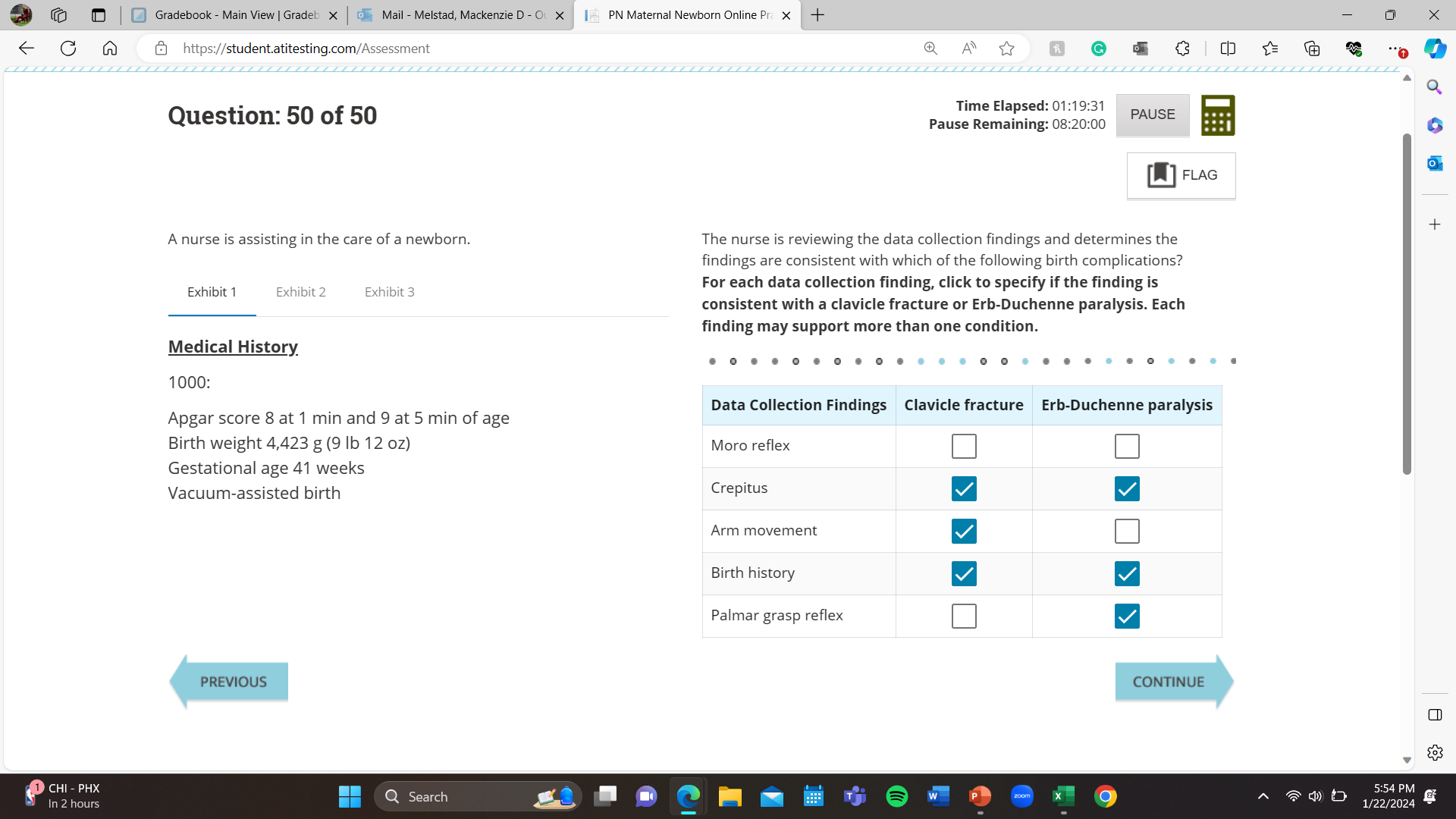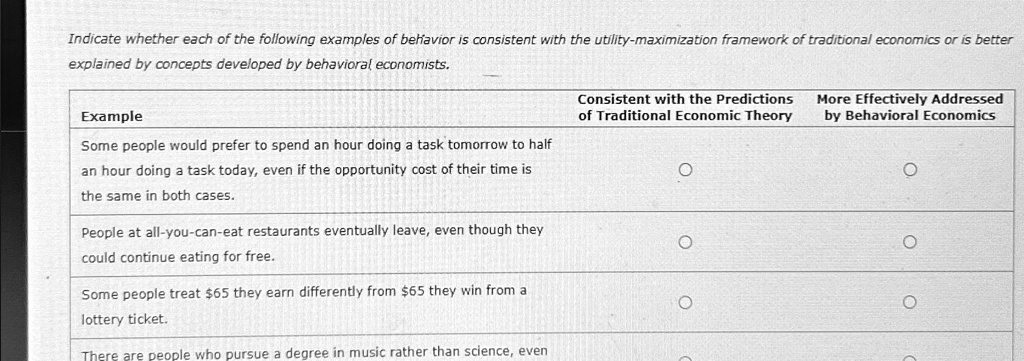Which Of The Following Is Most Consistent With Imminent Delivery

The air in the birthing center is thick with anticipation. Soft instrumental music plays in the background, a gentle counterpoint to the rhythmic beeping of the fetal heart monitor. Outside, a late afternoon sun casts long shadows, painting the walls in hues of orange and gold. Inside, all eyes are on Emily, her face etched with a mix of fatigue and unwavering determination.
Understanding the signs of imminent labor is crucial for expectant parents and their healthcare providers. Being able to accurately identify these signals can help ensure a safe and prepared delivery, allowing for timely interventions if needed and a smoother transition into parenthood.
Understanding Imminent Delivery
So, which signs indicate that labor is truly imminent? It's a question that consumes the minds of many pregnant individuals as their due date approaches. It's important to note that every pregnancy is unique, and the signs of labor can vary from person to person.
The key isn’t to look for one definitive sign, but rather a combination of factors that suggest the body is gearing up for delivery.
The Significance of Cervical Changes
One of the most reliable indicators of impending labor is changes in the cervix. Effacement, the thinning of the cervix, and dilation, the opening of the cervix, are both essential processes that prepare the body for childbirth.
A doctor or midwife can assess these changes during a vaginal exam. As effacement progresses, the cervix shortens from a thick structure to a thin, paper-like edge.
Dilation is measured in centimeters, from 0 to 10. Being dilated to 10 centimeters signifies that the cervix is fully open, ready for the baby to descend.
Contraction Patterns: Frequency, Intensity, and Duration
Contractions are a hallmark of labor, but not all contractions signal imminent delivery. Braxton Hicks contractions, sometimes called "false labor," can occur weeks or even months before actual labor begins.
The distinction lies in the pattern and intensity. True labor contractions become progressively more frequent, intense, and longer in duration.
A good rule of thumb is the 5-1-1 rule: contractions occurring every 5 minutes, lasting for 1 minute each, for at least 1 hour. However, healthcare providers emphasize focusing on the overall trend rather than adhering rigidly to this rule.
"It's not just about the numbers," explains Dr. Anya Sharma, an obstetrician at City General Hospital. "It's about the progression. Are the contractions getting stronger? Are they consistently requiring more of the mother's focus? That's what we look for."
The Rupture of Membranes (Water Breaking)
The rupture of membranes, commonly known as "water breaking," is another sign often associated with the start of labor. However, it doesn't always happen before labor contractions begin. In fact, according to the American College of Obstetricians and Gynecologists (ACOG), only about 15-20% of women experience rupture of membranes before labor starts.
When it does occur, it can manifest as a sudden gush of fluid or a slow, continuous trickle. Regardless of the amount, it's crucial to contact a healthcare provider immediately to assess the situation and minimize the risk of infection.
Other Potential Indicators
Beyond cervical changes, contractions, and water breaking, several other signs may suggest that labor is approaching. These can be more subtle and subjective but can still provide valuable clues.
One common sign is the "bloody show," which is the passage of a mucus plug tinged with blood. This plug seals the cervix during pregnancy, and its expulsion indicates that the cervix is softening and dilating.
Some women also experience a sudden burst of energy, often referred to as the "nesting instinct," as they prepare their home for the arrival of the baby. Others may experience diarrhea or nausea as their body clears out in preparation for labor.
Factors That Can Influence Labor
Several factors can influence the timing and progression of labor. Parity, or the number of previous pregnancies, plays a significant role.
Women who have given birth before often experience shorter and faster labors compared to first-time mothers. The position of the baby can also affect labor. A baby in an optimal position, with the head down and facing the mother's back, is more likely to facilitate a smooth labor.
Other factors, such as the mother's physical and emotional health, stress levels, and support system, can also impact the labor process.
Navigating Uncertainty: Seeking Professional Guidance
Ultimately, determining whether labor is truly imminent can be challenging, and it's essential to seek guidance from a qualified healthcare professional. Regular prenatal checkups allow doctors and midwives to monitor cervical changes, assess the baby's position, and discuss any concerns or questions.
When in doubt, it's always best to err on the side of caution and contact your healthcare provider. They can provide personalized advice and determine whether a trip to the hospital or birthing center is necessary.
By understanding the various signs of imminent labor and working closely with a healthcare provider, expectant parents can approach childbirth with greater confidence and preparedness. Remember, every pregnancy journey is unique, and the key is to trust your body, listen to your instincts, and seek support when needed.
Back in the birthing center, Emily takes a deep breath as another contraction washes over her. Her partner gently wipes her forehead, offering words of encouragement. The room is filled with a palpable sense of hope and anticipation. The journey is arduous, but the destination – the arrival of a new life – makes it all worthwhile.
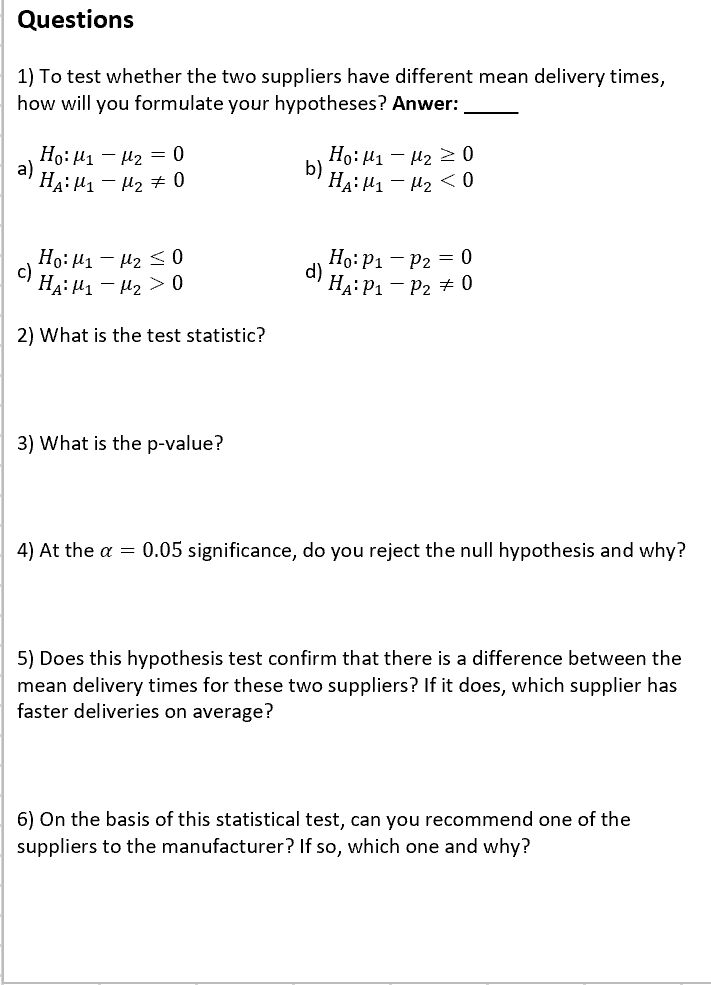
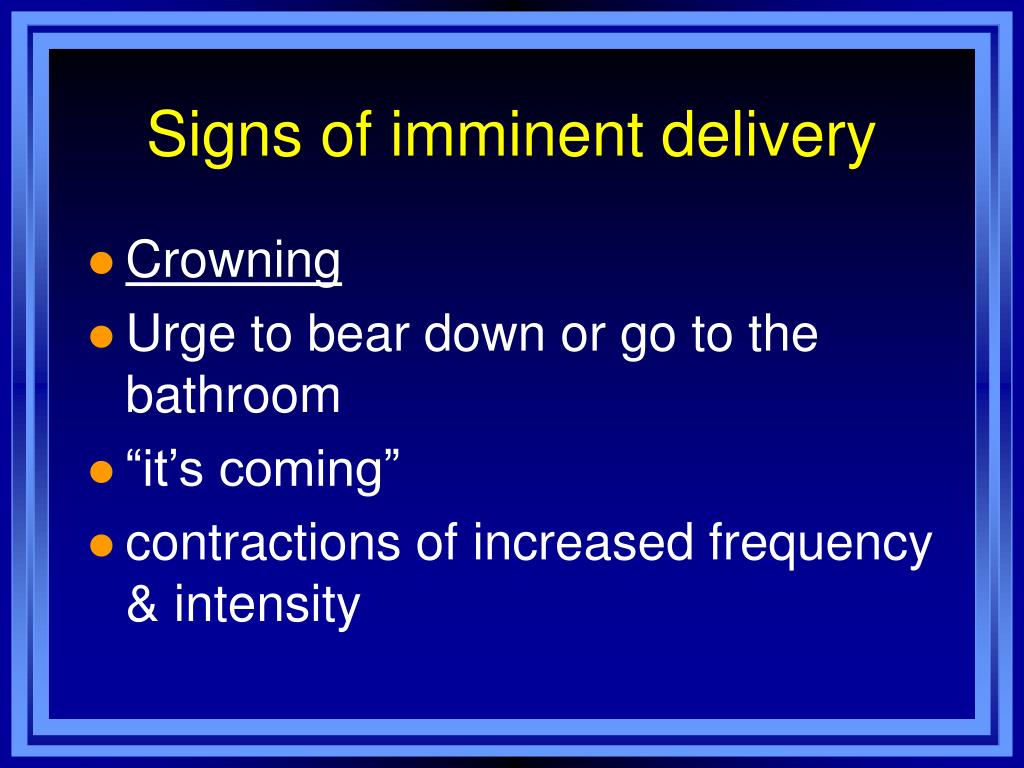

.jpg)
.jpg)
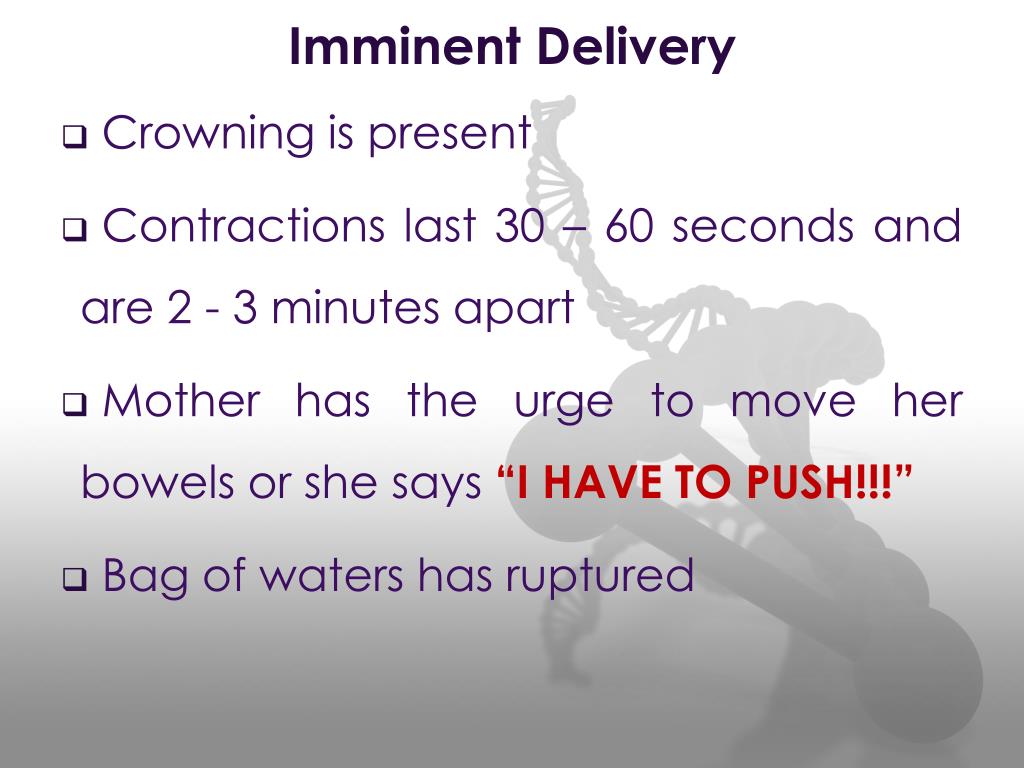


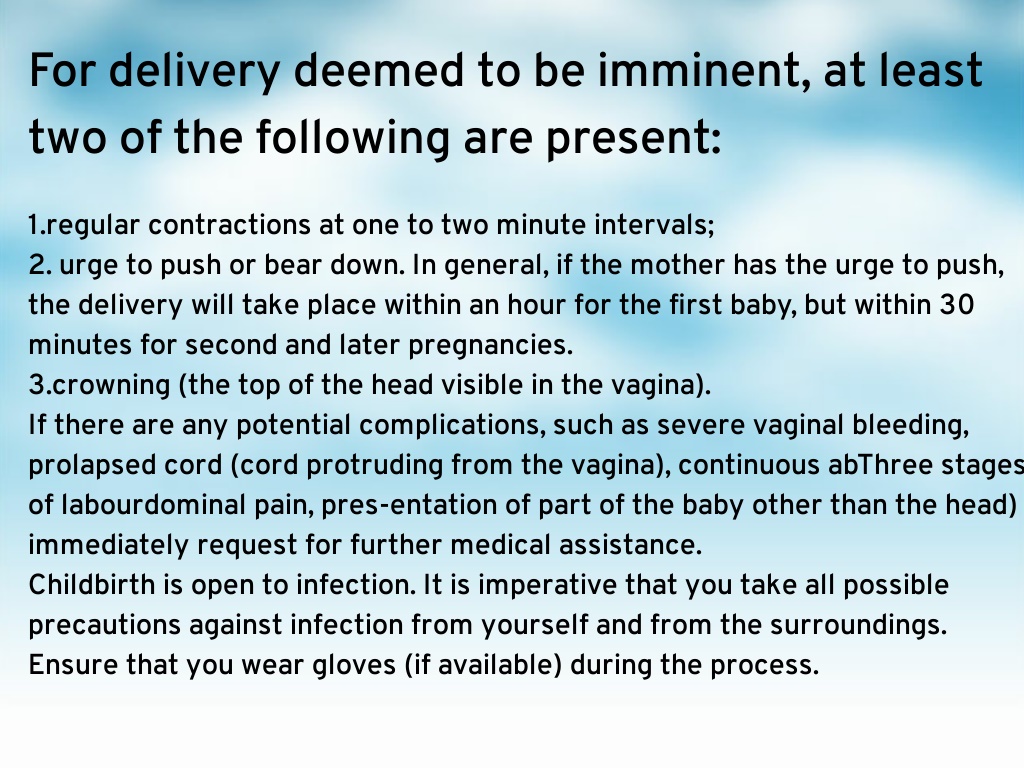
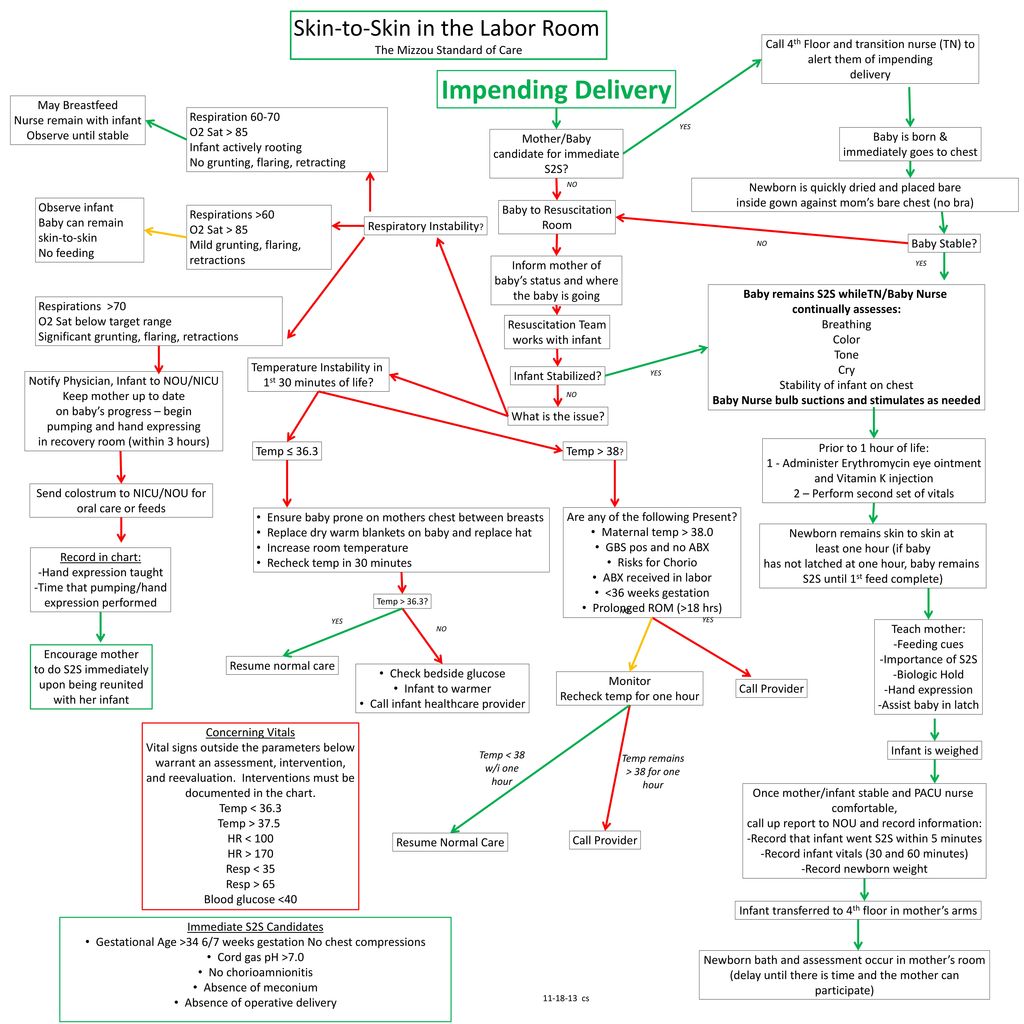
.jpg)
